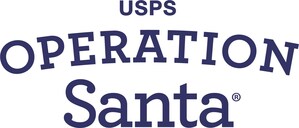U.S. Postal Service to Test Direct-Mail Product Sampling
Postal-Branded Co-op Effort Designed to Share Marketers' Costs, Drive Mail Revenue
WASHINGTON, April 9 /PRNewswire-USNewswire/ -- Eighty-one percent of consumers will buy a product after they receive a free sample, and most prefer to sample products at home, according to the Opinion Research Corp. This is the idea behind the marketing strategy of a samples co-op box that the U.S. Postal Service plans to market test early next month.
(Photo: http://www.newscom.com/cgi-bin/prnh/20100409/DC83964)
The "Samples Showcase," to be distributed nationally on a limited basis as well as in larger quantities to consumers in Charlotte, NC, and Pittsburgh, is a box of assorted beauty, health and snack food items from multiple consumer packaged goods companies. The boxes will be branded with the Postal Service logo and include the tagline, "A selection of free product samples."
Another strategy behind the pilot test is making sure that direct mail is the sampling method of choice. The co-op box concept, which allows candy bars to be marketed with skin lotions, for example, is expected to make direct mail sampling more attractive because it allows multiple manufacturers to share in the marketing and postage costs of the program.
"Consumer packaged goods companies are always looking for new ways to build brand awareness for their products," said Robert F. Bernstock, president, Mailing and Shipping Services. "One method they often turn to is providing trial-size samples to consumers. A large and growing industry, product sampling offers the Postal Service the potential for millions of dollars of added revenue."
The Postal Service will conduct research to determine the cost-effectiveness of the program and the value it provides to manufacturers and consumers.
"Mail is the only medium that really enables marketers to do this," said Bernstock. "It provides access to people's homes, and it can be tracked to determine if the samples actually convert to sales."
Earlier this month, Postmaster General John E. Potter outlined an aggressive plan of action that included cost cutting, increased productivity, and an array of legislative and regulatory changes necessary to maintain a viable Postal Service for decades to come. Potter also indicated the Postal Service will avail itself of opportunities under current law to increase revenue and enhance customer service.
The Postal Service receives no tax dollars for operating expenses, and relies on the sale of postage, products and services to fund its operations.
A self-supporting government enterprise, the U.S. Postal Service is the only delivery service that reaches every address in the nation, 150 million residences, businesses and Post Office Boxes. The Postal Service receives no direct support from taxpayers. With 36,000 retail locations and the most frequently visited website in the federal government, the Postal Service relies on the sale of postage, products and services to pay for operating expenses. Named the Most Trusted Government Agency five consecutive years and the sixth Most Trusted Business in the nation by the Ponemon Institute, the Postal Service has annual revenue of more than $68 billion and delivers nearly half the world's mail. If it were a private sector company, the U.S. Postal Service would rank 28th in the 2009 Fortune 500.
SOURCE U.S. Postal Service
WANT YOUR COMPANY'S NEWS FEATURED ON PRNEWSWIRE.COM?
Newsrooms &
Influencers
Digital Media
Outlets
Journalists
Opted In






Share this article